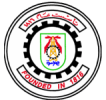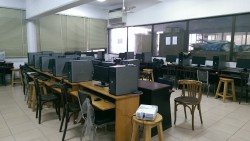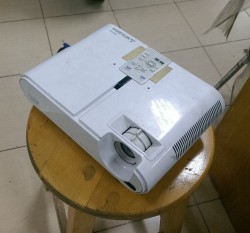The computer lab contributes in the application aspect of the theoretical study in the department. It highly adds to the weight of understanding and simulating the many famous problems in the field of aerospace and aeronautics; aerodynamics study cases, structures loading, fluid flow simulation, control manipulation…..etc.
As the study in the aerospace department is full of advanced science, comes the need for a computer lab that accommodates the need to keep this advanced science in the hand of any undergraduate student so that one can explore this field with no limits and stretch his mind throughout the 4 years study in the department. Also, the need for the faculty staff to deepen their knowledge and stiffens the bases of their studies.
Lab components:
the computer lab at the department (found on the third floor of the building) consists of 28 Personal computers with high attributes and advanced capabilities. The programs needed to cope with the study are already installed and working with full capabilities. The lab offers the idea of team work and grouping as the lab computers are connected to each other through Ethernet.
The lab also contains a projector and white board for a better presentation experience and a chance to preview the staff’s work to the students.
Available Programs:
Some the available soft wares programs available at the lab are:
Matlab, Mathematica, Fortran, maple, visual basic, java script, CFD, Nastran, seimens UG Nx….etc.
which are the most famous and strongest programs in their fields.
Matlab:
MATLAB is a high-performance language for technical computing. Developed by MathWorks, MATLAB allows matrix manipulations, plotting of functions and data, implementation of algorithms, creation of user interfaces, and interfacing with programs written in other languages, including C, C++, Java, Fortran and Python.
Although MATLAB is intended primarily for numerical computing, an optional toolbox uses the MuPAD symbolic engine, allowing access to symbolic computing capabilities. An additional package, Simulink, adds graphical multi-domain simulation and Model-Based Design for dynamic and embedded systems.
Mathematica:
Mathematica is a computational software program used in many scientific, engineering, mathematical and computing fields, based on symbolic mathematics. It was conceived by Stephen Wolfram and is developed by Wolfram Research of Champaign, Illinois. The Wolfram Language is the programming language used in Mathematica.
Ansys CFD :
ANSYS computational fluid dynamics (CFD) simulation software allows you to predict, with confidence, the impact of fluid flows on your product — throughout design and manufacturing as well as during end use. The software’s unparalleled fluid flow analysis capabilities can be used to design and optimize new equipment and to troubleshoot already existing installations. Whatever phenomena you are studying — single- or multi-phase, isothermal or reacting, compressible or not — ANSYS fluid dynamics solutions give you valuable insight into your product’s performance. The technology is highly scalable, providing efficient parallel calculations from a few to thousands of processing cores. Combining Fluent or CFX with the full-featured ANSYS CFD-Post post-processing tool allows you to perform advanced quantitative analysis or create high-quality visualizations and animations.
Siemens NX-UG:
NX, formerly known as NX Unigraphics or usually just U-G, is an advanced high-end CAD/CAM/CAE software package originally developed Unigraphics, but since 2007 by Siemens PLM Software. It is used, among other tasks, for:
- Design (parametric and direct solid/surface modelling)
- Engineering analysis (static, dynamic, electro-magnetic, thermal, using the Finite Element Method, and fluid using the finite volume method).
- Manufacturing finished design by using included machining modules.
NX is a direct competitor to CATIA and PTC Creo Elements/Pro.
Maple:
Maple helps you analyze, explore, visualize, and solve mathematical problems. With over 5000 functions, Maple offers the breadth, depth, and performance to handle every type of mathematics. Maple’s intuitive interface supports multiple styles of interaction, from Clickable Math™ tools to a sophisticated programming language. Using the smart document environment provided by Maple, you can automatically capture all of your technical knowledge in an electronic form that combines calculations, explanatory text and math, graphics, images, sound, and diagrams.
Nastran:
Nastran is a powerful, general purpose Finite Element Analysis (FEA) tool with an integrated graphical user interface and model Editor which is used to analyze linear and nonlinear stress, dynamics, and heat transfer characteristics of structures and mechanical components. It represents the latest in FEA technology with some of the fastest solvers on the market along with accurate solutions. Nastran can perform a wide variety of structural and thermal analyses.



